The Battle of Bathurst: Taking a Financial Bath
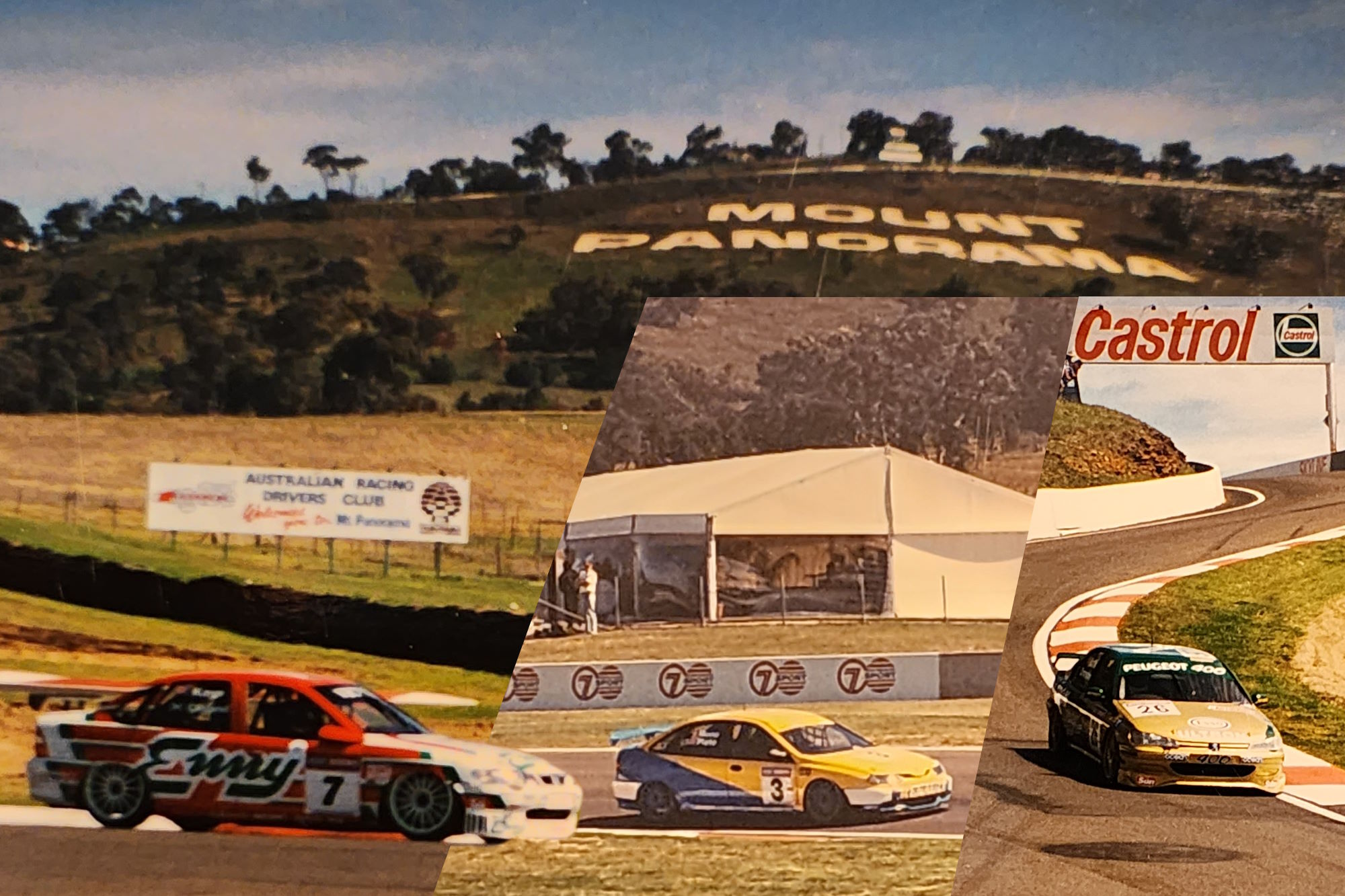
The culmination of Australian motorsport’s civil war came in 1997 with the running of dual Bathurst 1000 races.
In this series, we have previously delved into the formation of V8 Supercars and the power struggle that played out in the media following the Bathurst City Council’s sensational move to grant the V8s their rebel date on Mount Panorama.
Read: Part 1 – The Battle of Bathurst: V8s Vs Super Touring, TV Wars & Council Plays
Read: Part 2 – The Battle of Bathurst: Lawyers Engaged, V8s & Super Tourers Rage War
Read: Part 4 – The Battle of Bathurst: Publicly Disappointed, Epic Race & the Blame Game
Read: Part 5 – The Battle of Bathurst: Death Threats & Regrets, Epilogue to Motorsport’s Civil War
Now, in Part 3, we will examine those two drama-charged race weeks in October and the immediate reaction of the main players.
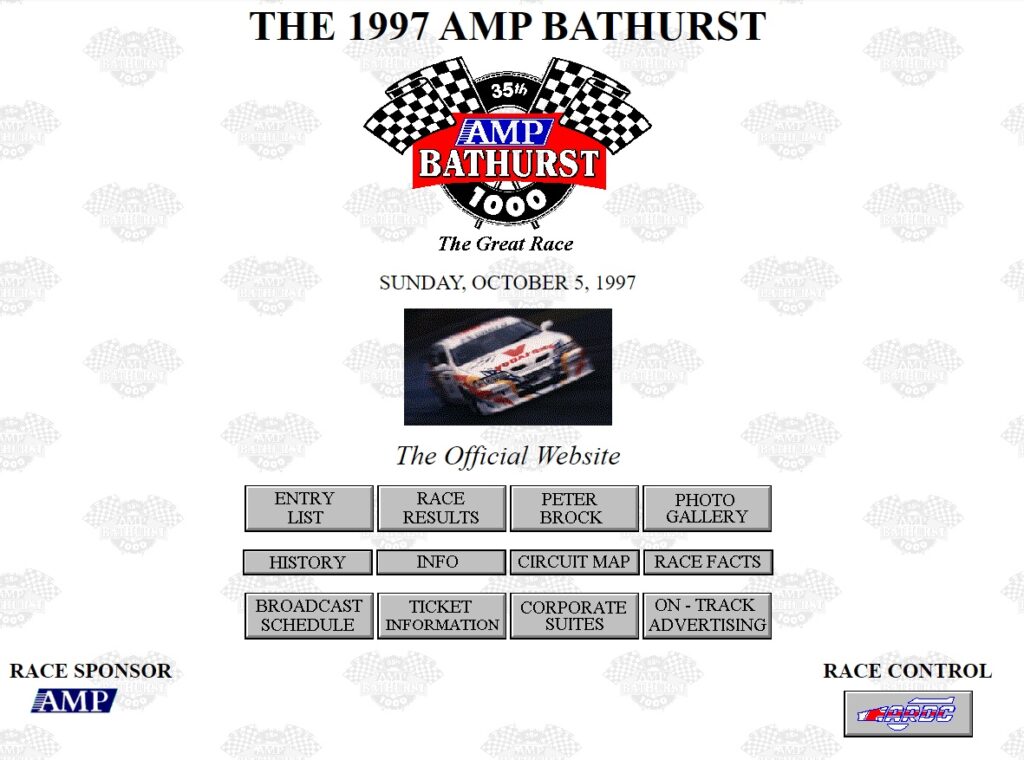
In the beginning of the internet…
The 1997 AMP Bathurst 1000
From the officially printed entry list of 36, 27 Super Tourers made it to race day at Mount Panorama on the first weekend in October.
Non-starters included the All Auto Parts Carina (which fronted at Saturday lunchtime and failed to fire) and the practised spare cars from BMW Motorsport Australia and Fastway Couriers Peugeot, while non-appearances came from Greenfield Mowers Racing (with Cameron McLean already listed in a Volvo), Hartong Motorsport and Darren Law from the USA, the pair of International Motorsport Australia BMWs, Miles Pope’s BMW, the third works Audi, and Bob Tweedie’s Vauxhall Cavalier.
The Audi, though, was on hand to provide that team with spare parts if required.
The various crews were forced to be assembled on the Mountain on the Sunday before race day, a move that raised the ire of some competitors. Cars finally took to the track on Wednesday, as was tradition.
Interestingly, in an effort to avoid a repeat of the 1987 dramas, a total of 24 cars failed their first attempt at pre-event scrutineering in a warning shot that funny business would not be tolerated.
The race week comprised some fascinating contrasts.
Ultimately, reliability in the race wasn’t fantastic: only 11 cars were classified at the chequered flag, with 13 laps covering the top-six and 23 laps the top ten – 13 cars suffered mechanical woes, one was not classified, one crashed, and two were disqualified.
Super Touring sympathisers pointed to the similarities between this and the entry/finishing figures produced by the early V8 1000s – if Super Touring were to grow, it had to start somewhere.
The preparation of the air freighted international entries also came under the spotlight.
Only one of the six Euro starters finished, and it was 13 laps off the pace. The Renault and Peugeot camps pointed out pre-event that they weren’t willing to mess with their reliable combinations from sprint racing back home.
Outside of necessities such as the long-range fuel tank and thicker brake pads, they were as per the UK, and none of them subsequently finished.
The disqualifications were at opposing ends of the spectrum.
The first was the Terry Skene/Aaron McGill/Jenni Thompson Ford Mondeo, which, with drivers Skene and McGill, rolled backwards down the hill from The Cutting to the pits against the flow of traffic twice. Additionally, car owner Peter Hills had “altered the recognition documents” for the car.
At the other end of town was the BMW of Paul Morris and Craig Baird, which provisionally won the race.
However, four hours after the chequered flag had flown, their effort was scrubbed from the records after it was found that Baird had exceeded the maximum 3.5-hour continuous driving time by almost half an hour.
The mistake arose at the final stop, when the team elected to keep Baird in the car. This move saved the outfit around 10 seconds, which proved crucial when the final margin of victory was only 4 seconds.
It was described as one of the costliest errors in the history of the race.
The ruling handed the victory to the sister Beemer of brothers Geoff and David Brabham, who themselves had to overcome a protest from the Audi camp after it was alleged that the car gained a position late by passing under yellow flags.
Ultimately, it was a tight run race to the finish, with Audis claiming the bottom podium steps with Brad Jones/Frank Biela and Cameron McConville/Jean-Francois Hemroulle in second and third, after Hemroulle and Brabham clashed at The Cutting on lap 145, which put both in the fence temporarily.
The two boxy older model Volvo 850s of Jim Richards/Rickard Rydell and Jan Nilsson/Cameron McLean were next, although they were laps off the pace.
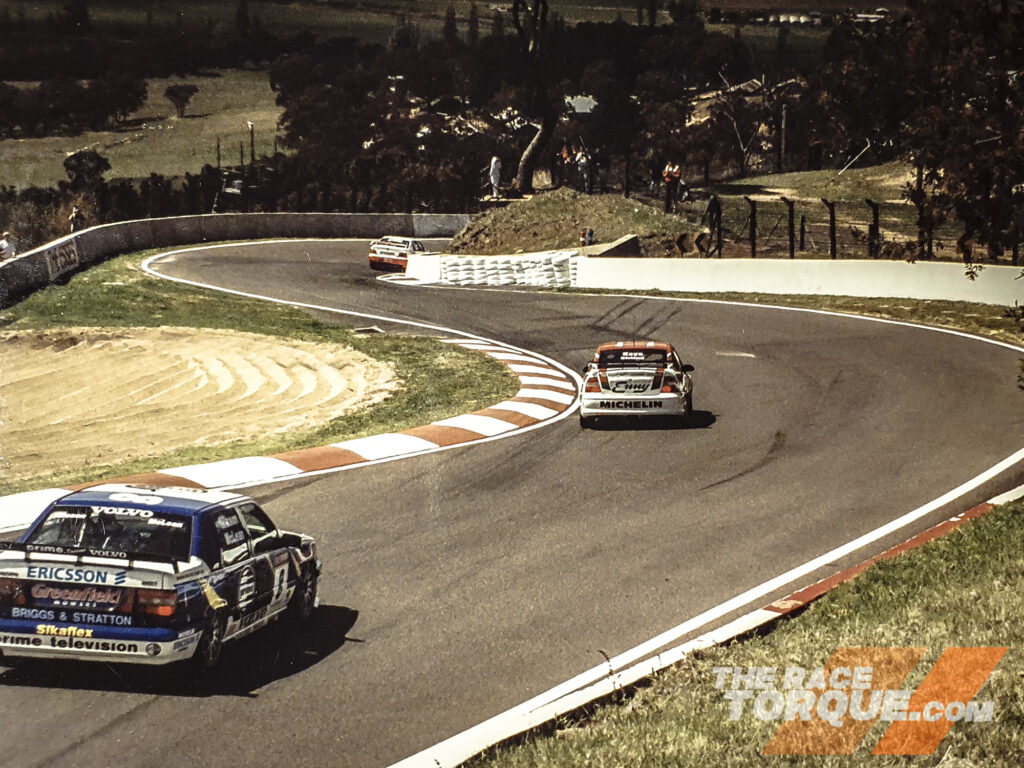
Peter Brock/Derek Warwick were next home, although they had a troubled day, which started with a disastrous opening pit stop when Brock couldn’t apply the steering lock to make the overcrowded Triple 8 pit bay.
Worse was to follow when an Austin Powers-style shuffle back and forth saw the car’s mirror snag an air line, which toppled their pit gantry.
It was a farcical scene from a British comedy.
Brock’s Bathurst week wasn’t a happy one. The legend of the Mount put the Vauxhall/Holden Vectra on its lid in The Chase during Wednesday practice, a stack that sent the car for an extended holiday in the TAFE compound and two days behind the game.
The only major crash of race day occurred when Alan Jones tripped on an oil slick at The Cutting, staunchly headbutting the concrete in his Renault.
It was a sad end to his time behind the wheel of a Williams, after the duo combined to register 11 Grand Prix victories together.
Another tough ending came for the Kiwi Peugeot crew of Tony Newman and Dwayne Bewley, which broke late.
Bewley’s efforts to limp over the line fell short, and the driver subsequently pushed his machine to the flag, an effort that wasn’t rewarded on the result sheet—Fred Flinstone-esque feats of strength were not allowed under the rules.
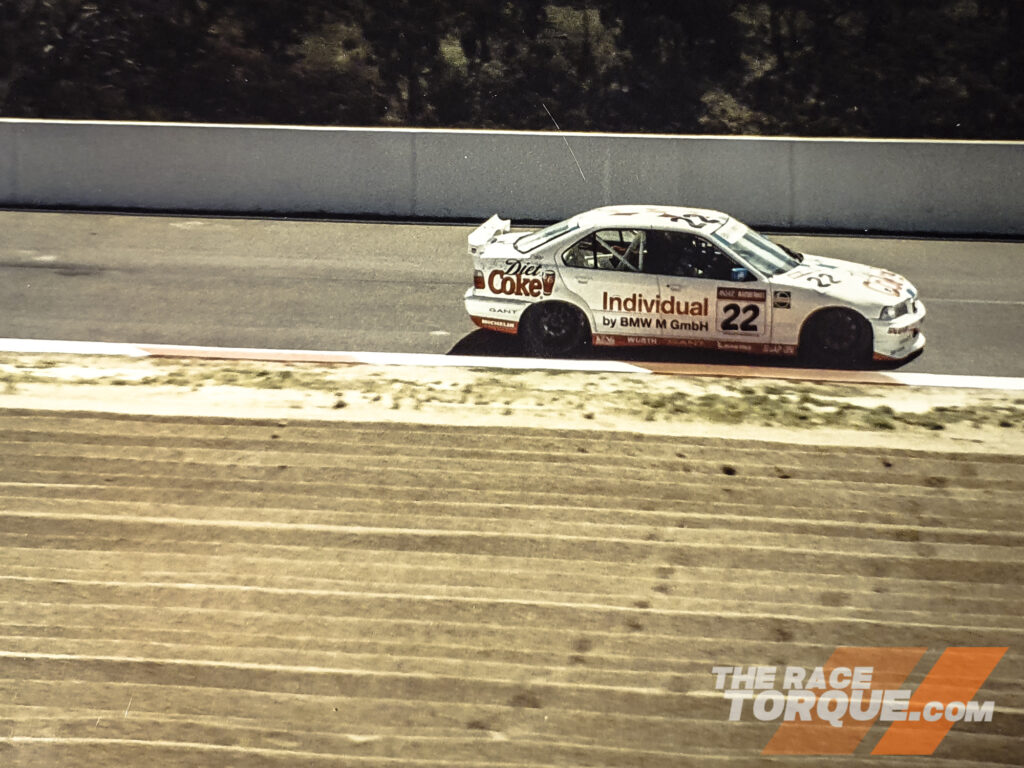
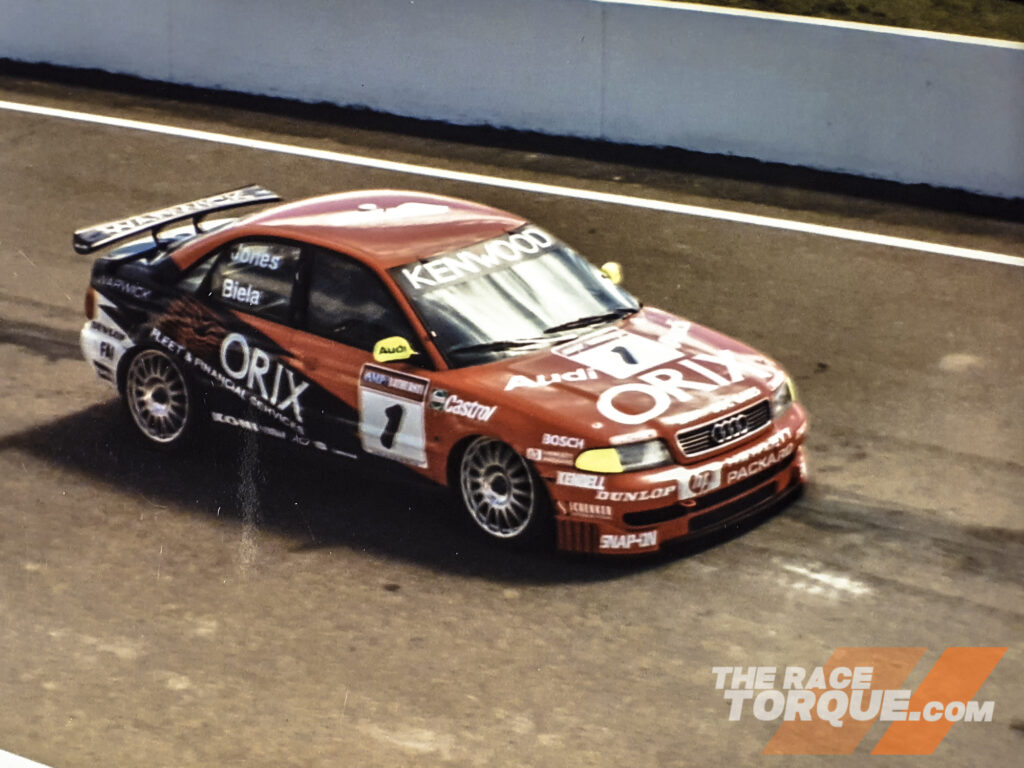
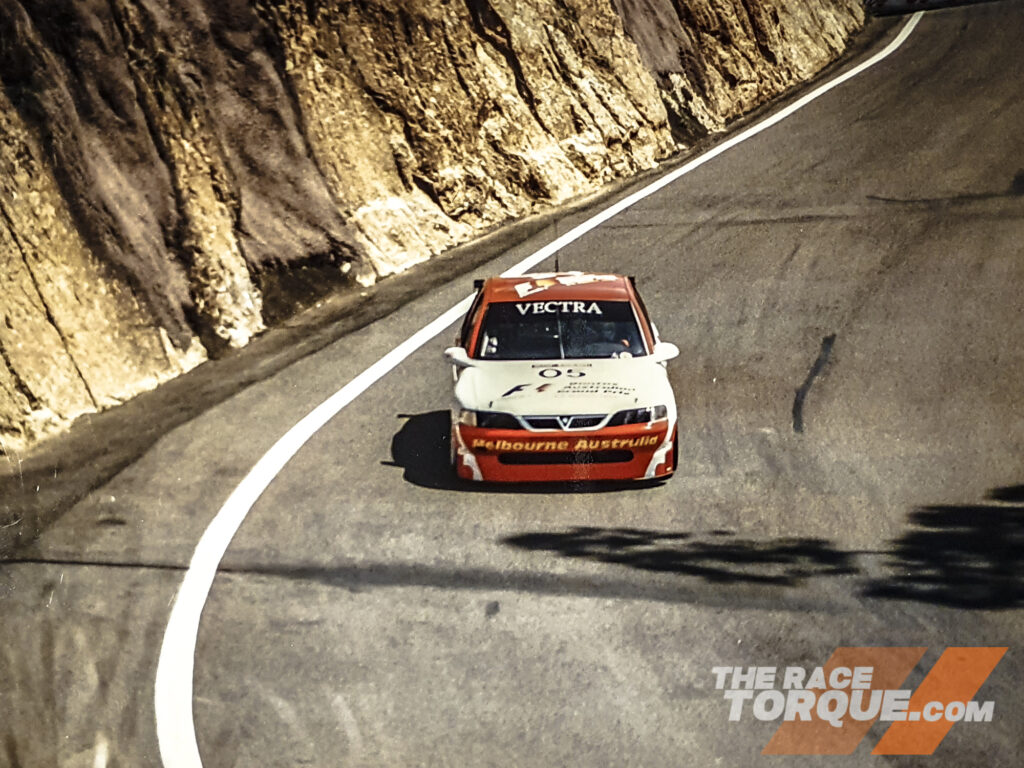
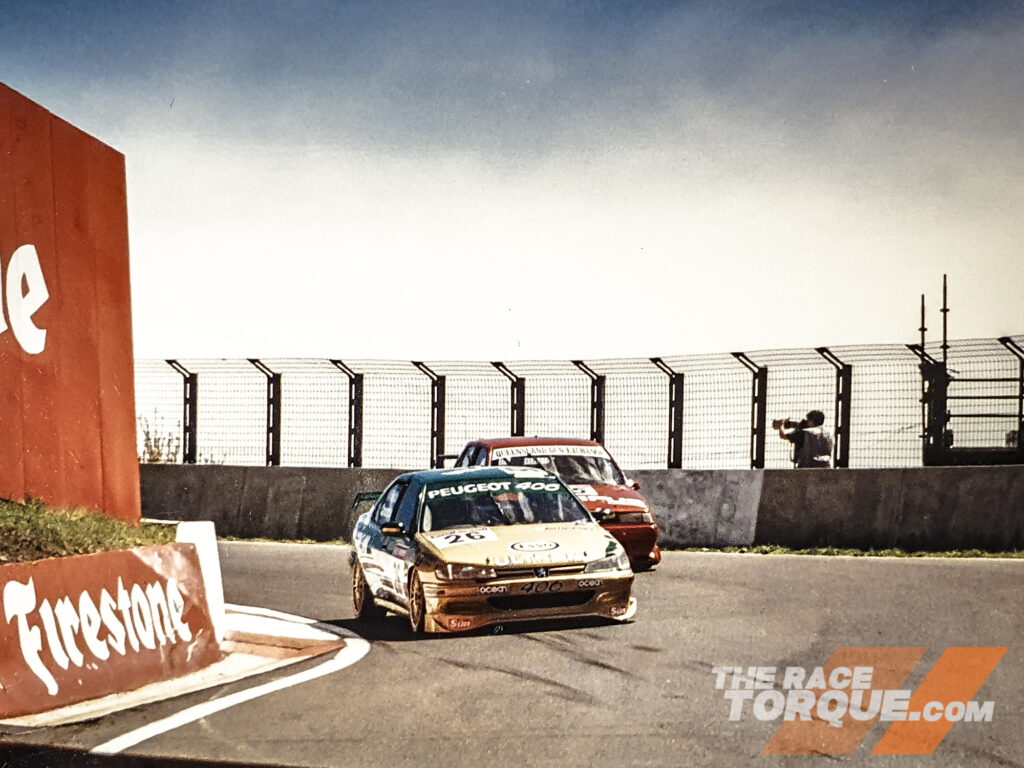
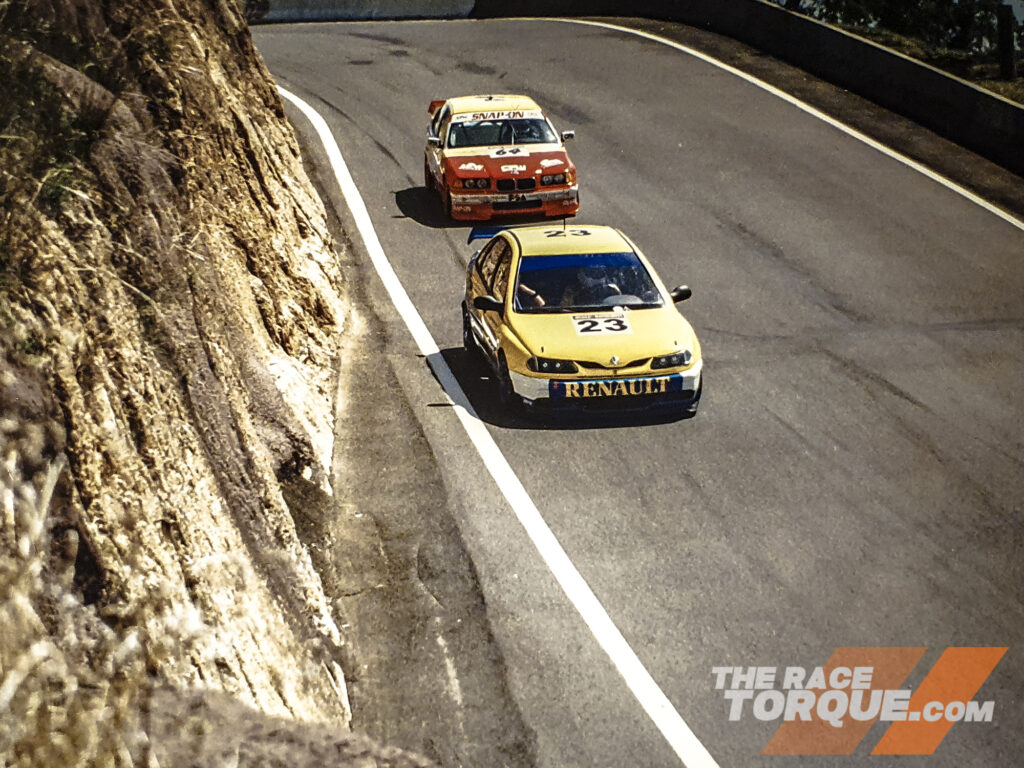
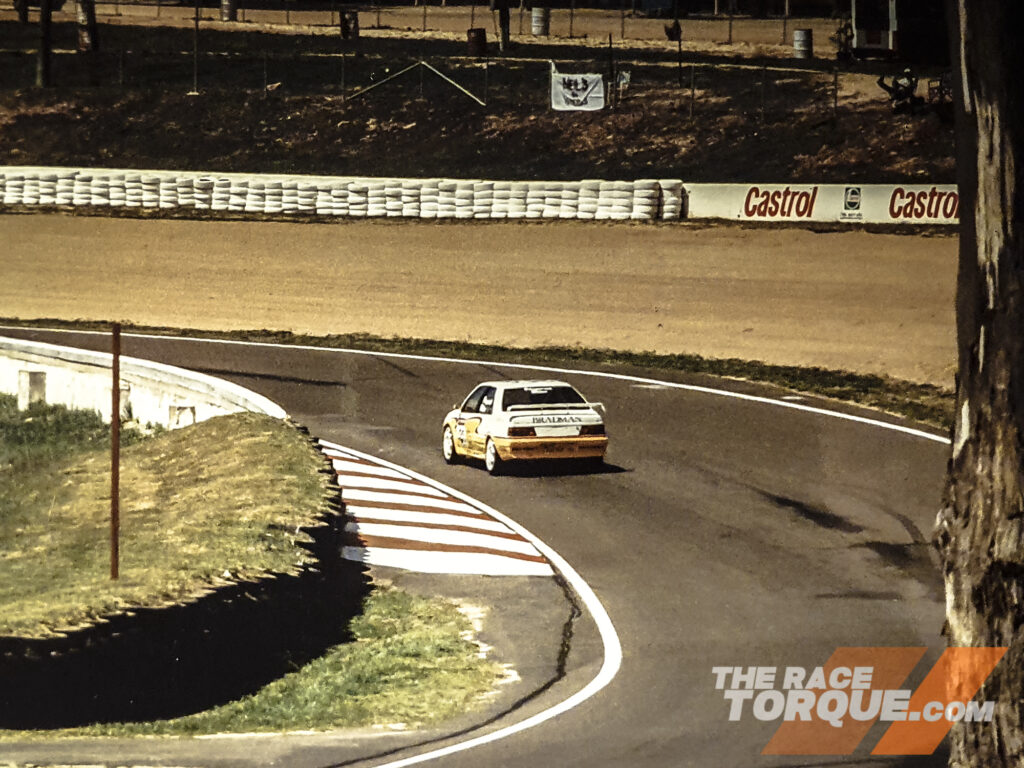
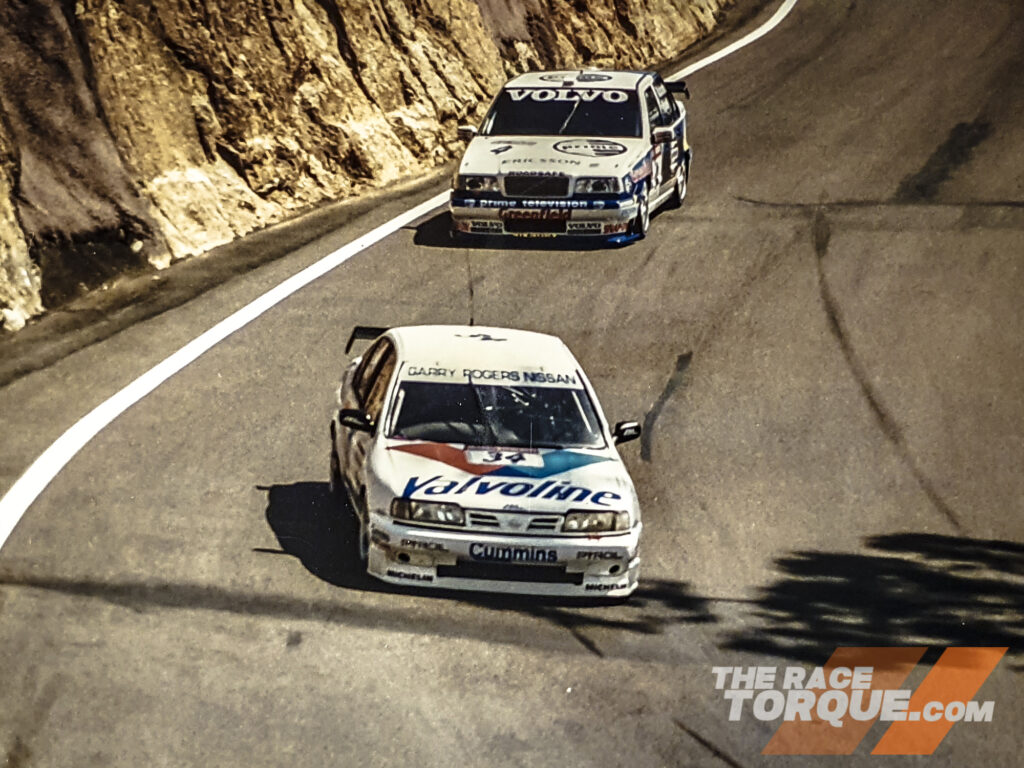
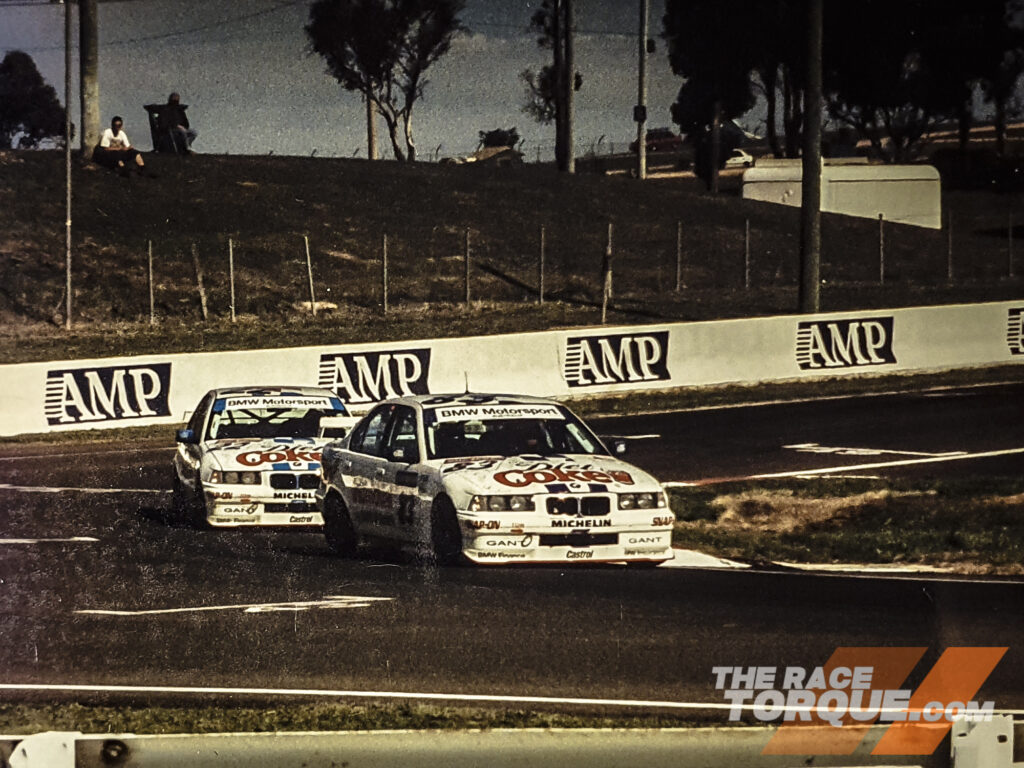
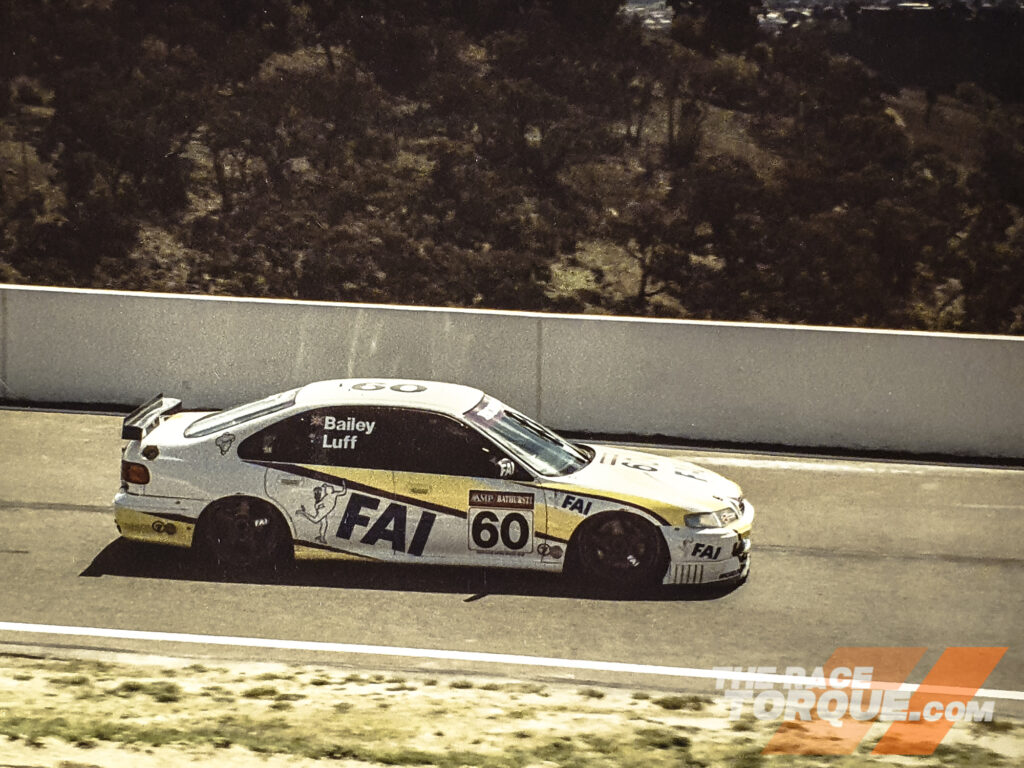
BMW would initially appeal the disqualification and $40,000 fine, but as they were guaranteed a win regardless, the appeal was withdrawn by the following Thursday.
It was an engaging race with a tight finish, which for the time absolutely stacked up in terms of competitiveness with other recent 1000s of the day.
With a glass-half-full view of the encounter, diversity had returned to the Mountain with multiple marques, with it also reverting to its roots as a true test of endurance.
On the box, average TV ratings on Seven were down over 40 per cent over the 1996 V8 race.
Elsewhere, the race was also shown on Optus Vision in Australia, in New Zealand through TVNZ, China on CCTV, the UK on the BBC plus BBC World, the USA on Speedvision, Asia via the ABC Satellite Service, and continental Europe via Eurosport, with most of the international markets receiving a mix of extended highlights.
For those looking for corporate hospitality, tickets ranged from $130 ($260 adjusted for inflation) per person for Friday only, through to $750 ($1,500) at the Hell Corner Villa for Saturday and Sunday.
For comparison, the 1998 V8 race saw a claimed 2,000 corporate tickets sold, with weekend packages selling for $450-$500 per person when sold in various group sizes.
General admission event passes for both events were $65 a pop, although the Super Touring event extended to an extra day of practice on Wednesday.
When it was all said and done, race day attracted an attendance that was quoted in the range of 18,000 to 21,000, while the event announced a deal that would see Super Touring continue through to 2002.
At the press conference for the extension, the attendees were split on whether they would be open to allowing other cars back into The Great Race.
Greg Eaton, from the Mount Panorama Consortium, said yes; Alan Gow from TOCA, meanwhile, was a hard no.
V8 Supercars quarters, meanwhile, pointed out that the announcement of the long-term contract was simply a reiteration of the original that was made back in January.
Post-event, reactions from the protagonists were somewhat mixed.
BTCC boss Gow to Motorsport News:
“Everyone knew we’d take a bath financially with this first one – the race was created after the UK teams had set their budgets, but it was superb. For an event that had everything going against it, it turned out far better than we’d imagined – it was a Great Race.”
Kelvin O’Reilly from TOCA Australia in MN said:
“It worked out exactly as we knew it would. It was a tough project to get it all together, given the late hour of the decision to go Super Tourer and the conflict and barriers put in our way, but it can only get better from here. We did it, got a 40 per cent finish rate, and put on a Great Race.”
Greg Eaton, Bathurst 1000 Event Management Chief Executive, to Auto Action:
“Attendance-wise, I think we met expectations if you take into account that there are two Bathurst races. We had around half of what we had last year, and that is indicative of what will happen when you put two races on a fortnight apart. It’s got nowhere else to go but up. I think everybody is on a very high note from the event and there is an indication that European teams are very interested in coming… I don’t believe we would have considered entering into such a long-term agreement if we didn’t feel there was a sufficient level of interest to ensure packed grids in the future.”
V8 Supercars Chairman Tony Cochrane, who refused to comment on the Super Touring 1000 in MN:
“We simply have to ensure that we run our race next week well. In our case, the three camping grounds are booked out, Channel Ten has, I believe, six major national advertisers supporting the telecast, and I’m expecting 35,000 plus, although others are predicting 50,000.”
Meanwhile, in AA, Cochrane said:
“I’ll leave them to run their own race, but I’ll just draw your attention to the fact Alan Gow promised us there would be 45 cars at Bathurst this year, with at least 20 internationals (there were 27 starters and 6 internationals). It’s all huff and puff – just a litany of broken promises. To me, Seven are on an ego hunt, because, I gather, they are kicking the tin and footing the bill. If they pull the plug because it’s costing them too much, the sport will suffer. Does Seven want to keep losing the reported $2-3 million a year? Can they afford to keep doing that? If they think they can build the race up, it’s going to cost them a lot of money.”
Wayne Cattach, TEGA Chairman, in MN:
“As Tony Cochrane would say, now is the time for the accountants. It’s all very well to put on a race, and it was quite a good finish – but at the end of the day, when all the emotion has died down, can Channel Seven, or indeed the ARDC, cop the sort of losses that will have been incurred on a recurring basis. It was a great race – now for the greater race.”
Seven Sport print ads pre-and-post-event, attached to an image from 1992 of the Seven logo on the side of Mount Panorama with a healthy crowd in the background, read:
“Bathurst belongs to who ever can last the longest. Bathurst is Australia’s greatest endurance race. Only one network has been there from the start. Through all the twists and turns of its 35 year history, from small cars to big, through turbos and now the 2.0 litre Super Tourers, Seven has brought you all the fender-bending, heart stopping action. Our commentators and cameraman have covered more laps than Moffat, Johnson, Richards and Brock. And Seven has always been at the forefront of innovation. We were first to put you in the driver’s seat with RaceCam. Now as Bathurst embraces the World Standard 2.0 litre Super Tourers, Seven is increasing its commitment. Because, ultimately the Great Race is all about endurance. And Seven is here for the long run.”
Elsewhere at the time of the event, discussion focused on the concept of an Asia Pacific Super Touring series, which was hoped to grow the category in the region further, while a 500km lead in race at Eastern Creek was also floated, with TOCA Australia noting it was a long-term possibility.
Meanwhile, back in the UK following the event, Alain Menu put the Bathurst disaster behind him by claiming the RAC Tourist Trophy at Donington for Renault.
It was hoped that some of the imported machinery would stay behind after Bathurst – none did, but the Peugeots wound up returning to these shores in time for local sprint race use.
Later in 1997, the ARDC’s AGM boiled over with emotion.
Questions were asked about the club’s involvement in the Mount Panorama Consortium – the club was noted as losing over $1.5 million on the 1997 event.
The total or partial sale of Amaroo Park was offered as a likely way for the club to resolve its financial predicament, while other suggestions included selling its stake in the Consortium and walking away from the event to which it was intrinsically linked.
The ARDC’s AMSCAR Series, filled with privateer V8 teams, came close to making it to the first weekend in October – they were scheduled and listed in the official program undercard.
Ultimately, the AMSCAR entered cars of Mal Rose, Garry Willmington, Neil Schembri, Bob Pearson, and Brian Walden, would make it to Mount Panorama in October 1997, albeit two weeks later.
The only V8 Supercar in attendance on the first weekend was aboard the Garry Rogers Motorsport transporter, with the team electing to only make one trip up the Hume Highway.
The 1997 Primus 1000 Classic
A couple of weeks later, Bathurst backed up for its encore performance.
The event proved to be an outstanding success for V8 Supercars, no doubt enhanced by the fact that it was Peter Brock’s swansong – it was the perfect storm – a farewell tour of the nation ended at the place that made him a legend.
It was a factor that made every man and his dog want to attend.
All told, race day attendance was 51,400, with the lead-in seeing crowds of 22,000 and 44,000 trackside on Friday and Saturday; it was genuinely large and the scene setter for the future.
For perspective, the all-time Sunday record crowd of 57,939 came later in 2012, the 50th year of the Great Race, a time when camping and spectating facilities had been far developed from the 1997 baseline.
The 41 entries for the race were a record in the V8 era to that point, and both IMG and Channel Ten noted that it was a profitable venture.
Ratings, however, were down, but the V8s were the winners, with the Ten broadcast dominating its time slots against Channels Seven and Nine.
For comparison:
- 1995 Tooheys Bathurst 1000: 15.4 rating average (4.75 million people average)
- 1996 AMP Bathurst 1000: 19.3 rating average
- 1997 AMP Bathurst 1000: 11.3 rating average (22 peak)
- 1997 Primus 1000 Classic: 14.7 rating average (24 peak)
When it was all said and done, the competitiveness and quality of the two races were somewhat similar.
Larry Perkins and Russell Ingall were comfortable victors by 11sec from Steven and Jim Richards, while Mark Larkham and Andrew Miedecke were nearly a full lap behind in third, with eight laps covering the top ten finishers.
There were some memorable stacks in the Classic, led by Tomas Mezera, who arrived at the end of The Chase brakeless before pirouetting John Trimbole’s Commodore through the gravel trap.
Elsewhere, John Bowe smacked the wall in the Esses after suffering suspension failure, ending his and Dick Johnson’s day, while Wayne Gardner was another high-profile casualty. The Coke Commodore spectacularly blew its engine at Forrest’s Elbow before being cleaned up by the Mitre 10 Falcon.
For Brock, the race promised so much but delivered zero.
From Mark Skaife’s pole position, Brock and his heir apparent dominated until the Chevy engine in 05 cried enough after 52 circuits in a crushing day for the HRT – Craig Lowndes crashed the sister car on top of The Mountain, while Greg Murphy binned that machine earlier in the weekend at Hell Corner.
Elsewhere, the squad’s Holden Young Lions entry scored provisional pole and fifth in the shootout with Jason Bargwanna behind the wheel, but the car was a race day scratching after a massive stack at the Elbow in the Sunday morning warm-up.
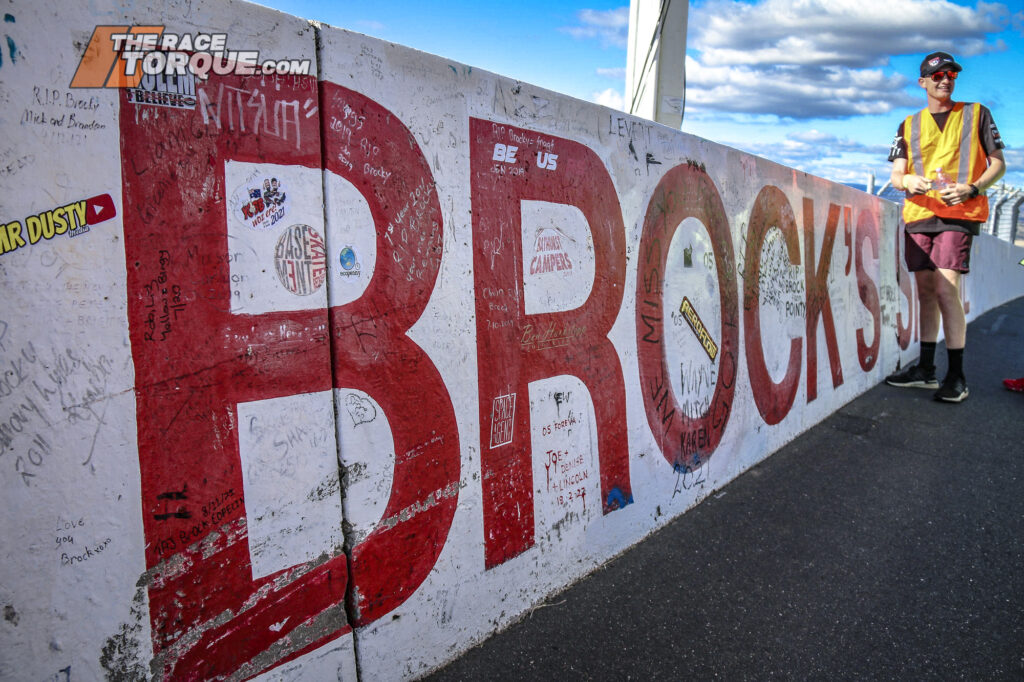
On the Friday of the meet, the Bathurst City Council unveiled the rebranding of ‘Brock’s Skyline’, a length of circuit that remains a focal point for fans to this date.
Then on Saturday, a joint press conference between AVESCO, TEGA, IMG, Network Ten, and the Bathurst City Council confirmed that the event would continue through to 2005 and move to a mid-November date “permanently,” although it would be open to relocating to the October long weekend if it were available.
At the end of the first year of AVESCO, numerous wins were trumpeted, including owning and controlling all rights, a long-term TV deal, an ATCC TV audience of 4,157,000, up 31 per cent, sanctioning fees from circuits, the elimination of entry fees for participants, and a significant increase in Bathurst prizemoney.
One of the initial sticking points of the battle of Bathurst was prizemoney, with the Super Touring race simply advising cash prizes to the tune of $300,000, with $2,000 going to the Denny Hulme Rookie of the Year award.
For the V8 race, the total listed prize pool came to $596,000, with $100,000 for first, $25,000 for first privateer, $15,000 for pole, $5,000 for qualifying in the top ten, with entrants in ‘Special Class One’ eligible for a $5,000 bonus.
While an impressive sum, it was a fair way away from the earlier quoted figure of $750,000.
Even the GT Production race featured $60,000 in prize money, including $10,000 for the race winner and $5,000 – $3,000 – $2,000 for the podium in each class.
Next up in part four: The encore performance in 1998, and the undelivered promises that shattered the Super Touring dream.














